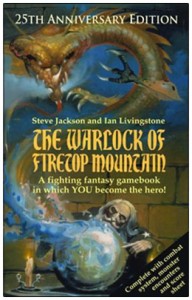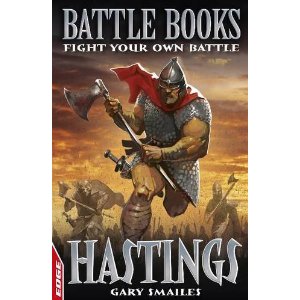Read more on "What Is The Point Of Writing A Book If You Have No Online Presence?" »
Let’s face it, in 2011 writers need a strong online presence. In a world where self-publishing is a realistic option, and big publishers are telling us that having an online presence is essential to getting a book deal, writers are left with little option but to embrace technology and start building. But this leaves one important question: How do you build an online presence?
In this article I will show you how writers can build an online presence, in the process avoiding wasting time on activities that fail to bring potential book buyers to your site.
Inbound vs Outbound
The phrase ‘online presence’ can mean many things, but at its most basic it simply means attracting visitors to your blog or website. The more ‘regular’ visitors you push to your site, the stronger your online presence.
The traditional method of attracting attention is what is known as Outbound Marketing. This type of marketing is things you (or someone else) do to try and tell people about you and your book. TV, radio and print adverts are all types of outbound marketing, as are book reviews and Google adwords. As a rule of thumb outbound marketing tends to be both expensive and its effectiveness difficult to measure.
For example; a book publisher may pay for a glossy poster to be placed on the side of a fleet of busses. A big picture of your book rides around the streets for all to see. Yet, despite the expense it is impossible to measure just how many people buy your book as a result of seeing the advert. A lot of expense with only a potential reward.
Inbound Marketing flips the outbound model on its head. Inbound marketing focuses on techniques that drive potential book readers to your site by providing content that is both interesting and engaging. By delighting readers they are more likely to seek out your content and, hopefully, buy your book. As a side effect inbound marketing tends to be very cheap and almost always measurable.
For example; let’s say you were to set up a Twitter account and build a fan base of 1000 followers by sending out links to valuable and relevant resources. You could engage with these fans and slowly educate them to the presence of your book, converting a number of them into book buyers in the process. Using some simple free tools you can track the number of visitors you drive to your site and the number of these who go on to buy your book.
Where To Start
Rather than explore the theory of inbound marketing, I have instead listed a number of techniques that you can use to build an online presence. I would like to start by saying that, with the exception of a blog/website, it is not essential that you apply ALL of the techniques. In fact, I would suggest that whilst you are formulating your inbound marketing strategy you pick just two or three techniques. Only when comfortable with these techniques should you be looking to introduce others.
Blog/Website
One essential element to any successful plan to build an online presence with a central hub . I strongly suggest that this is a blog. A static website will work, but a blog is better. There are many tutorials about setting up a blog but my advice would be to use WordPress. It is by far the most popular blogging software and has many free resources, such as plugins and themes, as well as a huge amount of online training content.
Here are a few tips to consider when thinking about your blog:
- Domain name: Buy your own domain name and pick one that makes sense. I would strongly suggest you go for your name. If you opt to go for the title of your book, you will find yourself a bit stumped when you write your second book! I would also suggest you go for a top level domain name. If you go for a localised domain (e.g. .co.uk) this will severely limit your chances of ranking highly on search engines in other countries.
- Sell your book: Make sure that once you have set up your blog/website that you have a very clear method for visitors to buy your book. Even if this is just a link to Amazon it is essential that any potential readers drawn to your blog know how to buy your book. This is called having a ‘clear call to action.’ The whole point is to sell books, so don’t be shy – push, push, push.
- A bit about you: An About You page with a photo is essential. This will help you connect to your potential readers and make it that little bit easier for them to hit that buy button.
- Regular content: There are two very good reasons for setting up and maintaining a regular blog. The first is that by creating great content you are feeding your inbound marketing machine, giving potential readers a reason to come to your site. In fact, the reason you are here is as part of BubbleCow’s inbound marketing strategy. We sell editorial services to writers. By writing articles that will appeal to writers, it brings potential buyers of our services to our site. The second reason for producing regular content is to feed Google. Each blog post you produce is one more blog post in Google’s huge database and one more post that will bring potential readers to your site for weeks or even months after it is published.
Social Media: Twitter
There are hundreds of potential social media channels but I suggest you focus on three, of which Twitter is the first and, in my view, the most important. There are many articles written about setting up and using Twitter and I don’t want to go over information that can be found elsewhere.
The key to building a following on Twitter lies in two areas. The first is adding value. This is giving followers a reason to follow you. BubbleCow’s Twitter stream focuses on tweeting out between five or ten links each day to resources we feel writers will enjoy. The second is persistence. You are looking at least a year of daily tweeting for Twitter to become a really effective method of finding potential readers.
To give you some kind of feel for the importance of Twitter here’s some figures from our site.
At the time of writing @bubblecow had 8560 followers, though I suspect at least 2000 of these were inactive (had not tweeted in three months).
In April 2011, Twitter represented 7.61% of the total traffic to BubbleCow. However, if we delve into the stats we get some interesting results. The problem we have is that the vast majority of our traffic comes into the blog, and not all of this traffic represents writers looking for copy editing. In fact, in business terms we have just two pages on our site that really matter. These are the copy editing product pages: Editing for submission to agents and Copy Editing for self-publishing writers. The second product is new and the stats for last month are not really a fair reflection, so let’s look at the copy editing for submission to agents and publishers.
If we look at the source for hits to this page we find that the top source for visits to this page in April 2011 was Google with 31.61% of the hits. However, the second highest source of hits to the page was Twitter which represented 30.09% of total visits to the page in April 2011.
This means that the second most important source of hits to the pages that actually generate business for BubbleCow was twitter!
Social Media: Facebook
It is estimated that Facebook has in excess of 5 million users. For this reason alone Facebook is not a social media channel you can afford to ignore. Once again, this is not the place to suggest tactics for using Facebook. This is an evolving area of discussion and I suggest you do some research on sites far more qualified to comment on the best way to use Facebook.
At the BubbleCow Facebook page we use two methods to engage with our fans. The first is a clone of Twitter, with us posting links to writer resources we feel will be of value. The second is as a place writers can come and chat. We try to ask a question each day and take the time to engage with writers.
So is Facebook effective?
This is a tough question to answer. In terms of engaging with writers and potential customers the answer is yes. It is very effective. However, the cold stats paint a different picture…
In April 2011, we found that Facebook was the seventh highest source of visitors to the site as a whole, representing just 1.34% of total visitors. If we look at that critical copy editing page we see a similar picture with Facebook representing just 2.74% of visits.
These figures should be taken with a pinch of salt since it could be argued that writers we have engaged on Facebook are far more likely to use our services when they do visit.
Social Media: Quora
Quora is a social media channel that is rapidly growing in value. In essence it is a crowd sourced question and answer site. Someone poses a question and users submit answers. These responses are then voted on, with the best content floating to the top.
I have been using Quora for a few months now, but it is way too early to draw any conclusion as to its value as a channel for attracting potential customers to the site. However, in the interests of clarity in April 2011, Quora represented just 0.14% of total traffic, though this was an 11% increase on the previous month.
Ebooks
For the next few examples I want to move away from the strategy we use at BubbleCow and delve into some of the ideas that have worked for others. The first of these is ebooks. The idea here is that you produce an ebook that will be of value to your potential readers. This ebook could be a non-fiction title, offering advice and guidance on a particular topic. However, in the case of a writer, I would suggest a sample of your work, or even a collection of short stories would be more applicable.
The theory is that you give the book away for free off your site, but set up a system to push people who download the book back to your site. One example would be to include a link at the end of the book to a page on your site that offers a bonus story. However, I would suggest you use a service such as Wufoo to ask readers to ‘pay’ for the book by giving you their email, which you can use at a later date.
Comment Marketing
The concept of Comment Marketing is pretty simple. You spend time hunting down forums and blogs that will be read by potential readers of your book. You then leave entertaining and insightful comments at these blogs and forums. In fact, the nature of this approach is a little more ‘in-depth’ and requires you to become involved in communities outside your usual sphere of influence. This is not a quick fix approach and requires understanding of the way each community works to get the maximum value.
Leaving comments on blogs and forums has two direct advantages. The first is that you will leave a breadcrumb trail back to your website. Leave a well worded comment, or just show up enough times and other members of the community will follow your trail and eventually show up at your blog. The second is to build backlinks. Amongst the many factors that Google use to determine your blog’s ranking is the number of high quality sites that link to your blog. Therefore the more backlinks you can leave out in the wide world of the internet, the more visible you become to Google.
Email
Email, when used correctly, is a highly effective method of connecting with potential readers. Your email marketing strategy should be split into two distinct components: capture and execution.
Capture involves convincing visitors to give you their email address, allowing you to pass them information at a later date. I would suggest there are three levels of email collection. The first is to use a system such as a pop up. This sees a box popping up for every new visitor and giving them a chance to add their email. The second is a more static method that normally sees a form on the site in which visitors can add their email. The third method is to ask visitors to exchange their email for a product, a common example being an ebook (see ebook above).
I would suggest that in the first instance you use two free tools to set up your email capture system. I would use a free Wufoo form on the site, which re-directs the email to a free database at mailchimp. You can then use Mailchimp to send out emails to your whole email list is in one go (for free is less that 2000 per day at Mailchimp).
Execution is your interaction with potential readers. This sees you sending out emails to everyone you have collected on your database. Once again there are different levels of engagement. You could send out a regular newsletter that contains items of interest to your potential readers. Alternatively you could actually send emails that are more direct, perhaps offering limited time discounts on your book.
Advanced techniques
All the examples above represent just a selection of inbound marketing techniques you can use, there are many more. The idea is to show you just a few that I have found to be either very effective, or feel are easy to implement. I would suggest that you start by trying one or two of ideas out. However, once you are ready to move onto the next stage, below are a couple of things you should be considering:
SEO
Search Engine Optimization is by far the single best, long term, method of bringing sustainable and valuable traffic to your site. SEO is basically ensuring that your website is as visible to Google as possible, and is focussed on the kinds of keywords that will bring ‘quality’ visitors. The principles of good SEO are easy to learn and this free guide to SEO is a great place to start.
For example; in order to optimise this page for Google search ranking I did the following:
- Picked a keyword: In this case the phrase ‘online presence’.
- Used the keyword: I made sure that the phrase ‘online presence’ appeared in the page title, the url of the site, the first paragraph and as many times as possible. I should have added it to the h2 tags (the bold sub-headings), but it didn’t read well.
- Links: I made sure that I was linking out to a couple of high profile sites.
- Back links: I tried to make the content as valuable as possible so people would share, not so much for the visits, but for backlinks.
If you are serious about building the traffic for your site and to your books, then you need to have at least a passing understanding of the key SEO principles. If you are using WordPress, I would suggest the two following plugins to help with SEO:
Stumble Upon
This tip is not so much about Stumble Upon, but about the kind of traffic sites like Stumble will bring. I class Stumble Upon in the same group as Digg, Reddit (social book marking sites). In essence these websites send traffic to your page based on what other users are classing as worth reading.
Stumble Upon is a popular site and can bring hundreds, if not thousands of hits per day. It is easy to get carried away with high visitor numbers and be lulled into a false warm feeling that your site is popular. The key is to remember the goal of your site, which should be to engage with readers and, hopefully, get them to buy your book.
There are two types of visitor to your site: good visitors and bad visitors. Good visitors engage with your blog posts, they hang around a bit, read what you have to say, leave a comment, add their email to your newsletter, follow you on Twitter and even buy your book. Bad visitors come and then go. Stumble tends to bring bad visitors.
Let me show you:
In April 2011, the top two referrers of traffic to the BubbleCow site were Google (39.15%) and Stumble (20.32%). However, this just tells us the number of visitors, it doesn’t tell us the ‘quality’ of the visits. In order to do this we can use three statistics. The first is bounce rate. This will tell us the percentage of visitors that left the site within 5 seconds, the second is time on site and the third is the number of pages read.
If we look at visits from Google we see that 6.64% bounced (left within 5 seconds), the average time on site was 1 minute and 30 seconds and the average number of pages read was 2.76.
For Stumble traffic we find that the bounce rate is 8.11%, the average time on site is just 21 seconds, though the average number of pages read was 2.27.
All visitor stats must be taken with a pinch of salt, but from the information above there is a strong case to say that visitors from Google are more engaged than Stumble visitors.
So I am saying don’t use Stumble (Digg etc)?
Actually no, I am saying that you should use them. For every 1000 visitors Stumble brings, a percentage will be good visitors. The problem is that this percentage will be small. Since Stumble is free, then why not? All I am saying is that don’t be lulled into a false sense of success. Book sales, not total visitor numbers, are all that count!
Measure
I hope by this point I have convinced you that you need an inbound marketing strategy for your book. If I have, then there is one more tool that you can use to make your efforts more effective and that’s Google Analytics. This free tool is an essential for tracking the behaviour of visitors to your site. However, if you are using it to simply tell you how many ‘hits’ you have each day then you are missing the point.
I strongly advise you to invest some time in learning the basics of Google Analytics. I would start with getting a grasp of the ‘usefulness’ of the stats they offer and then move onto implementing ‘goals’ to your stats. It is easy to become overwhelmed, so I would suggest you start at the Google Analytics help pages and then move onto the excellent book Web Analytics 2.0
A strong grasp of Google Analytics will allow you to measure the success of your efforts. Only by doing this will you have an idea of what is working for your site (and by working I mean visitors engaging and buying your book) and what is not. Google Analytics will also give you the tool you need to experiment and measure the success of these experiments.
First steps
If you have got this far then you must be itching to get started. My advice for your very first step is to make an assessment of your current strategy. Look closely at what you are currently doing (blog, twitter, Facebook etc) and what you do well. This is where you should start…
For example, if you have a growing Twitter following, then start there. Look at what you are doing on Twitter and try to work out what works (by works I mean gets RT, drives traffic, allows you to engage) and do more of this. The stuff that doesn’t work (lead to potential sales) then drop.
Oh and don’t forget to measure…
Resources
WordPress - Free blogging software.
HubSpot - Lots of information about inbound marketing.
SeoMoz - Great SEO blog
Timely - Brilliant free Twitter tool for measurement.
Google Analytics - Free and powerful web traffic software.
MailChimp - Free email management
Wuffo - Free web forms with Mailchimp integration.




